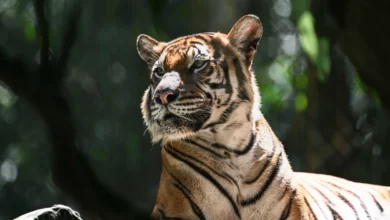During the 20th century, about 75 percent of all food crops slipped into extinction, which meant that all the unique attributes that these crops possessed–such as the capacity to withstand droughts, cold winters or pests–were irretrievably lost.
The main cause of this genetic loss was the use of uniform crop varieties to replace hundreds, if not thousands, of local varieties used over large areas of production during the past 50 years. The rapid, widespread crop extinction that resulted has left farmers and food producers with fewer options to address problems caused by unpredictable climate changes while trying to feed a growing population.
In order to safeguard the world’s biodiversity, with a special emphasis on endangered field crops, genetic resources collections were initiated and since the 1980s national gene banks have been built all over the world. The role of these banks includes making genetic resources available to the people.
In Egypt, the National Gene Bank (NGB) was inaugurated in 2004 within the large premises of the Agricultural Research Centre, located close to the Cairo University campus. The gene bank is surrounded by five feddans of agricultural land, where experts can often be seen monitoring the growth of a variety of selected crops.
Egypt's NGB is responsible for an off-site conservation program, while also being the focal point for the coordination of breeding programs in both the public and private sectors, a seed supply system and a genetic resource program.
There are four departments–field crops, horticultural crops, animals and agriculture related micro-organisms–alongside greenhouses and numerous labs and facilities for seed viability testing, molecular genetics and tissue culture.
Egypt is one of the 182 signatories of the International Treaty on Plant Genetic Resources for Food and Agriculture signed in 2002, which sets the guidelines for collecting, identifying, evaluating, maintaining and documenting the genetic resources of plants.
Hanaiya al-Itribi, the president of the NGB in Egypt, explains that the gene bank is not a storage facility, for actually its main goal is utilization. “What we do here is collect, preserve and conserve Egypt’s biodiversity in the form of seeds, tissues and micro-organisms and give farmers free access to this.” The storage facilities can be accessed easily and for free as long as both parties, the recipient of the seed and the gene bank, sign a material transfer agreement as stipulated by the international treaty.
“Of course we can only give farmers samples of genetic material which they are required to multiply if they want to grow it on their land. We cooperate with local farmers to collect endangered cultivars and we propagate them and redistribute them to the farmers. If farmers have problems multiplying their crops, the NGB will do it for them and send the crops back so they can grow and proliferate in situ,” al-Itribi explains, adding that as long as the seed is used for food or agricultural purposes, no money is involved. But if the recipient is seeking to obtain a seed for medicinal or commercial purposes, then an exchange takes place either in the form of technology transfer or financial payment.
Until recently, seed ownership was not fought over. Today, though, seeds are regulated by the laws of Intellectual Property Rights (IPR), and so now one of the biggest challenges is to determine who is the owner of a seed.
Al-Itribi explains that in order to register a seed under a farmer's name at the gene bank, the organization undertakes an extensive process of inquiry to determine how long it has been present in this particular habitat and whether or not it was brought by the farmer from another location.
When a seed is to be stored, the NGB creates a duplicate of the seed to be conserved in the bank, registered under the farmer’s name. Each seed is labeled with the following information: the farmer’s name, its exact GPS location and the seed's details. This makes it is easy for breeders to locate seeds they are interested in.
The NGB contains various types of storage facilities able to contain as many as 200,000 accessions (or plant samples). “So far, we have 24,000 accessions in the NGB and we are in the process of building a minus 165 degree storage room for extremely long-term conservation, called ‘cryogenic conservation’”, explains al-Itribi.
The Gene Bank receives LE2 million a year from the Ministry of Agriculture and Land Reclamation, but does not rely solely on that to function. Al-Itribi stresses that she encourages the bank's researchers to write proposals for funding from international bodies such as the Food and Agriculture Organization.
National gene banks all over the world are obliged, as per the above-mentioned treaty, to cooperate and exchange technology and genetic material. But this process, which is clearly monitored, also requires material transfer agreements. “The treaty lists 64 species, including wheat, maize and legumes, that are allowed to be exchanged from one country to another,” explains al-Itriby. If a species does not belong to this list–cotton, for example–it is up to each country to decide whether or not it will send it to another gene bank. So far, the Egyptian NGB has had limited exchanges with other gene banks in terms of technology and genetic material because it is still in the process of finalizing its new accessions database.
Thus the gene bank serves the essential role of protecting and conserving Egypt’s biodiversity for future generations, but this knowledge remains to be disseminated among the population at large.




